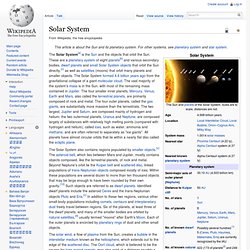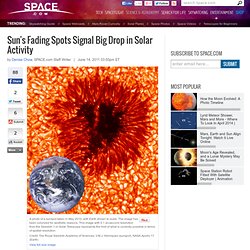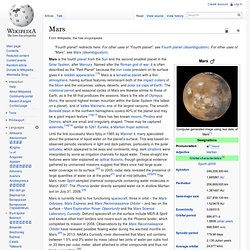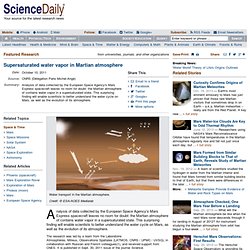

Solar System. Discovery and exploration Andreas Cellarius's illustration of the Copernican system, from the Harmonia Macrocosmica (1660) For many thousands of years, humanity, with a few notable exceptions, did not recognize the existence of the Solar System.

New Dwarf Planet Found At The Solar System's Outer Limits. Hide captionThis diagram for the outer solar system shows the orbits of Sedna (in orange) and 2012 VP113 (in red).

The sun and terrestrial planets are at the center, surrounded by the orbits (in purple) of the four giant planets — Jupiter, Saturn, Uranus and Neptune. The Kuiper belt, which includes Pluto, is shown by the dotted light blue region. Scott S. Sheppard/Carnegie Institution for Science. Sun. 2012: Killer solar flares are a physical impossibility, experts say. Given a legitimate need to protect Earth from the most intense forms of space weather -- great bursts of electromagnetic energy and particles that can sometimes stream from the sun -- some people worry that a gigantic "killer solar flare" could hurl enough energy to destroy Earth.

Citing the accurate fact that solar activity is currently ramping up in its standard 11-year cycle, there are those who believe that 2012 could be coincident with such a flare. But this same solar cycle has occurred over millennia. Anyone over the age of 11 has already lived through such a solar maximum with no harm. In addition, the next solar maximum is predicted to occur in late 2013 or early 2014, not 2012. Most importantly, however, there simply isn't enough energy in the sun to send a killer fireball 93 million miles to destroy Earth. This is not to say that space weather can't affect our planet. Sun's Fading Spots Signal Big Drop in Solar Activity. This story was updated at 3:54 p.m.

EDT. Some unusual solar readings, including fading sunspots and weakening magnetic activity near the poles, could be indications that our sun is preparing to be less active in the coming years. The results of three separate studies seem to show that even as the current sunspot cycle swells toward the solar maximum, the sun could be heading into a more-dormant period, with activity during the next 11-year sunspot cycle greatly reduced or even eliminated.
Venus. Venus is a terrestrial planet and is sometimes called Earth's "sister planet" because of their similar size, gravity, and bulk composition (Venus is both the closest planet to Earth and the planet closest in size to Earth).

However, it has also been shown to be very different from Earth in other respects. It has the densest atmosphere of the four terrestrial planets, consisting of more than 96% carbon dioxide. The atmospheric pressure at the planet's surface is 92 times that of Earth's. With a mean surface temperature of 735 K (462 °C; 863 °F), Venus is by far the hottest planet in the Solar System. It has no carbon cycle to lock carbon back into rocks and surface features, nor does it seem to have any organic life to absorb it in biomass. Physical characteristics. Venus has an ozone layer too, space probe discovers. The European Space Agency's Venus Express spacecraft has discovered an ozone layer high in the atmosphere of Venus.

Comparing its properties with those of the equivalent layers on Earth and Mars will help astronomers refine their searches for life on other planets.
Mars. Animation of Mars' rotation from the vantage of an observer who moves south, then north, to hover over both poles, showing the planet's major topographic features.

Mars is currently host to five functioning spacecraft: three in orbit – the Mars Odyssey, Mars Express, and Mars Reconnaissance Orbiter – and two on the surface – Mars Exploration Rover Opportunity and the Mars Science Laboratory Curiosity. Defunct spacecraft on the surface include MER-A Spirit and several other inert landers and rovers such as the Phoenix lander, which completed its mission in 2008.
Observations by the Mars Reconnaissance Orbiter have revealed possible flowing water during the warmest months on Mars.[25] In 2013, NASA's Curiosity rover discovered that Mars' soil contains between 1.5% and 3% water by mass (about two pints of water per cubic foot or 33 liters per cubic meter, albeit attached to other compounds and thus not freely accessible).[26] Physical characteristics. Mars Crater May Actually Be Ancient Supervolcano. Supersaturated water vapor in Martian atmosphere.
Analysis of data collected by the European Space Agency's Mars Express spacecraft leaves no room for doubt: the Martian atmosphere of contains water vapor in a supersaturated state.

This surprising finding will enable scientists to better understand the water cycle on Mars, as well as the evolution of its atmosphere. The research was led by a team from the Laboratoire Atmosphères, Milieux, Observations Spatiales (LATMOS, CNRS / UPMC / UVSQ), in collaboration with Russian and French colleagues(1), and received support from CNES. It is published in Sept. 30, 2011 issue of the journal Science. On Earth, water vapor tends to condense, i.e. turn into a liquid, when the temperature falls below dew point. The atmosphere is said to be 'saturated' since it cannot hold any more moisture at that temperature and pressure. Mars site may hold 'buried life' 30 July 2010Last updated at 00:09 By Victoria Gill Science reporter, BBC News.

Jupiter. Structure Jupiter is composed primarily of gaseous and liquid matter.

Dark Jupiter May Haunt Edge of Solar System. A century of comet data suggests a dark, Jupiter-sized object is lurking at the solar system’s outer edge and hurling chunks of ice and dust toward Earth. “We’ve accumulated 10 years’ more data, double the comets we viewed to test this hypothesis,” said planetary scientist John Matese of the University of Louisiana at Lafayette. “Only now should we be able to falsify or verify that you could have a Jupiter-mass object out there.” In 1999, Matese and colleague Daniel Whitmire suggested the sun has a hidden companion that boots icy bodies from the Oort Cloud, a spherical haze of comets at the solar system’s fringes, into the inner solar system where we can see them.
In a new analysis of observations dating back to 1898, Matese and Whitmire confirm their original idea: About 20 percent of the comets visible from Earth were sent by a dark, distant planet. “But we began to ask, what kind of an object could you hope to infer from the present data that we are seeing?” See Also: Europa (moon) Europa. Jupiter Moon Europa May Have Water Geysers Taller Than Everest. Jupiter's icy moon Europa may erupt with fleeting plumes of water more than 20 times the height of Mt. Everest, scientists say. If these giant waterspouts are confirmed, they could be a way to detect signs of any life that might exist in the underground ocean that researchers suspect Europa has, scientists added. Evidence for 'great lake' on Europa and potential new habitat for life. In a significant finding in the search for life beyond Earth, scientists from The University of Texas at Austin and elsewhere have discovered what appears to be a body of liquid water the volume of the North American Great Lakes locked inside the icy shell of Jupiter's moon Europa.
The water could represent a potential habitat for life, and many more such lakes might exist throughout the shallow regions of Europa's shell, lead author Britney Schmidt, a postdoctoral fellow at The University of Texas at Austin's Institute for Geophysics, writes in the journal Nature. Further increasing the potential for life, the newly discovered lake is covered by floating ice shelves that seem to be collapsing, providing a mechanism for transferring nutrients and energy between the surface and a vast ocean already inferred to exist below the thick ice shell. Saturn. Saturn's interior is probably composed of a core of iron, nickel and rock (silicon and oxygen compounds), surrounded by a deep layer of metallic hydrogen, an intermediate layer of liquid hydrogen and liquid helium and an outer gaseous layer.[15] The planet exhibits a pale yellow hue due to ammonia crystals in its upper atmosphere.
Electrical current within the metallic hydrogen layer is thought to give rise to Saturn's planetary magnetic field, which is weaker than Earth's magnetic field but has a magnetic moment 580 times that of the Earth due to Saturn's larger body radius. Saturn's magnetic field strength is around one-twentieth the strength of Jupiter's.[16] The outer atmosphere is generally bland and lacking in contrast, although long-lived features can appear.
Wind speeds on Saturn can reach 1,800 km/h (1,100 mph), faster than on Jupiter, but not as fast as those on Neptune.[17] Physical characteristics. Saturn's Rings May Be Remains of Ripped-Apart Moon.
Enceladus (moon) What's that sparkle in Cassini's eye? Uranus. Series of bumps sent Uranus into its sideways spin, new research suggests. Uranus' Great White Spot May Be Giant Methane Storm. <br/><a href=" US News</a> | <a href=" Business News</a> Neptune. Neptune is similar in composition to Uranus, and both have compositions which differ from those of the larger gas giants, Jupiter, and Saturn.
Neptune's atmosphere, while similar to Jupiter's and Saturn's in that it is composed primarily of hydrogen and helium, along with traces of hydrocarbons and possibly nitrogen, contains a higher proportion of "ices" such as water, ammonia, and methane.